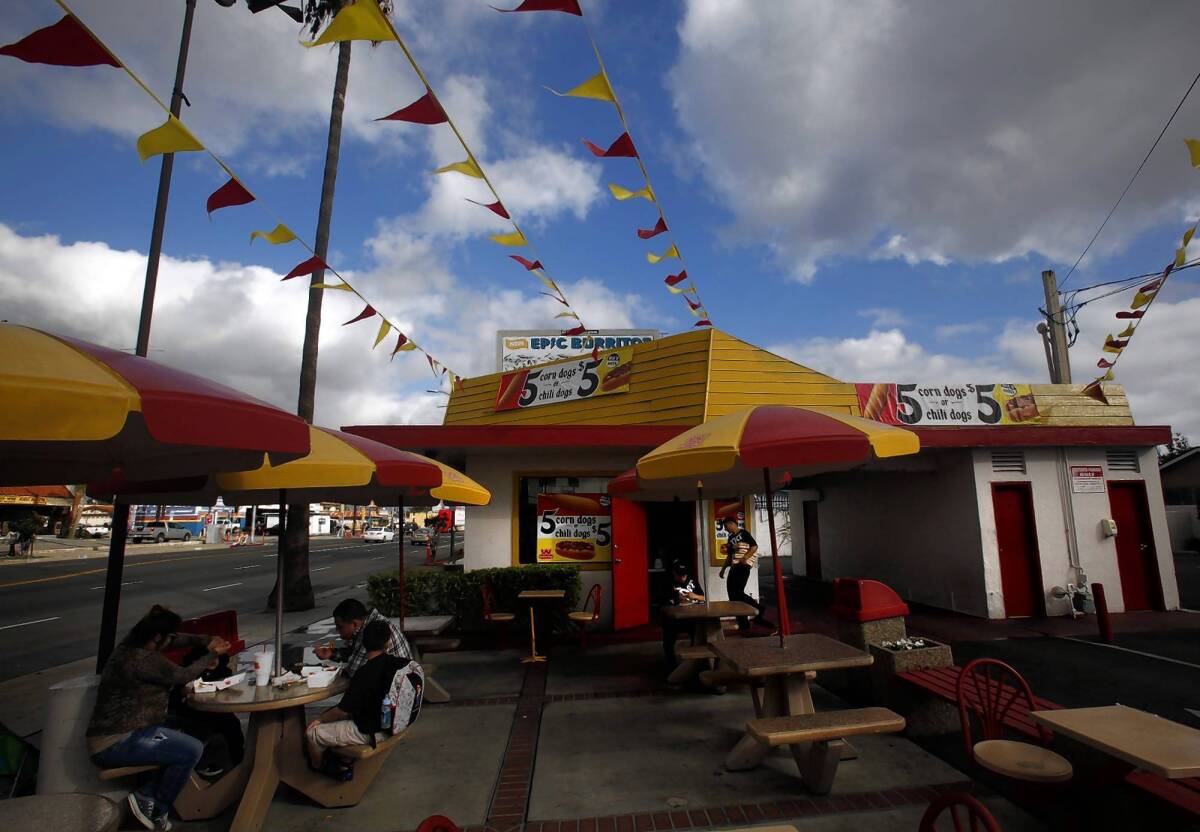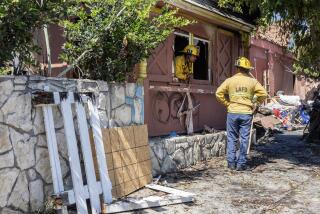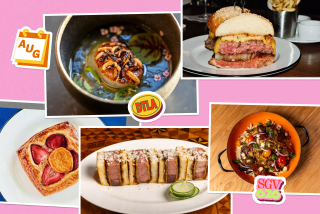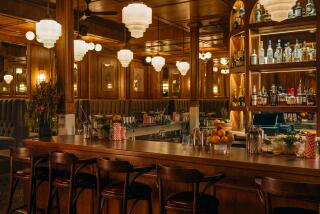First Wienerschnitzel, symbol of L.A. car culture, now a landmark

Over the decades, the city of Los Angeles has named more than 1,000 architectural and historic landmarks: the Egyptian Theatre in Hollywood, the Theme Building at LAX, the entry gates of Chinatown.
And now it has Der Wienerschnitzel.
On Tuesday, the City Council added the nondescript, flat-roofed drive-through, the first of the more than 350 opened by the Wienerschnitzel chain, to its registry of historic-cultural monuments.
Less than 600 square feet in size, the Wienerschnitzel outlet in Wilmington isn’t much to look at. It’s emblazoned in the colors of ketchup and mustard. Tiny racing pennants, strung from the roof, flap in the breeze.
“While this is a modest structure, this was the first location of what has become a significant national chain,” said Ken Bernstein, who runs the city’s Office of Historic Resources. “The building also is a very intact example of an early drive-through and walk-up food stand associated with Los Angeles car culture.”
The council’s decision makes the Wienerschnitzel drive-through, built on Pacific Coast Highway in 1961, only the second roadside food stand to receive such an honor from City Hall, Bernstein said. The first was the Munch Box in the west San Fernando Valley, which became a landmark in 2003 after then-Councilman Hal Bernson took up the cause.
Roadside architecture, disposable in so many ways, has been getting more respect in recent years. Councilman Paul Koretz, backed by the Los Angeles Conservancy, made the Googie-style Johnie’s Coffee Shop on Wilshire Boulevard a city monument last week.
But there have been setbacks, too.
Activists in the San Fernando Valley tried without success to make Henry’s Tacos, a food stand in Studio City, a historic monument last year. The Cultural Heritage Commission supported the idea, but the council never held a floor vote. Henry’s relocated in January amid a dispute with its landlord.
In Wilmington, the monument designation has been embraced enthusiastically by its owners.
“It’s sentimental to all of us,” said Tom Amberger, vice president of marketing for Irvine-based Galardi Group, Wienerschnitzel’s parent company.
Businessman John Galardi opened Der Wienerschnitzel in 1961, not long after working at Taco Tia — a restaurant owned by Glen Bell Jr., creator of the Taco Bell restaurant chain. Galardi, who died this year, said Bell’s wife suggested at a dinner party that he pick the name Wienerschnitzel, which is the German name not for a hot dog but rather a breaded Viennese veal dish.
The company expanded dramatically, opening outlets as far away as Guam. Monica Pinto, working behind the window of the Wilmington Wienerschnitzel on Tuesday, found some inspiration in that success.
“He started with something small — a little hot dog stand,” said Pinto, 21, after handing over a chili cheese dog. “He started his own business, and look how many there are now.”
Wienerschnitzel dropped the Der from its name in 1977 but continues to use it in its marketing. Meanwhile, the company’s Wilmington outlet has gone through its own changes.
Gone is the rooftop sign with the Germanic-looking font. The flat roof has been changed to help it resemble other Wienerschnitzel outlets, which have an A-frame design.
None of that matters to Councilman Joe Buscaino, who backed the bid for landmark status after being elected to represent the neighborhood last year. Buscaino, who has eaten at Wilmington’s Wienerschnitzel exactly once, said he hopes people will travel to the neighborhood to see the historic hot dog hut, just as they do the world’s oldest McDonald’s in Downey.
“It’s something we need to celebrate,” he said.
More to Read
Sign up for Essential California
The most important California stories and recommendations in your inbox every morning.
You may occasionally receive promotional content from the Los Angeles Times.











